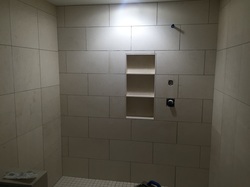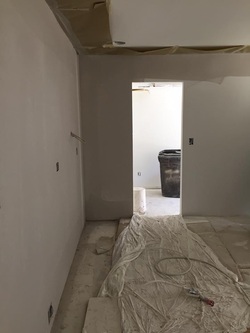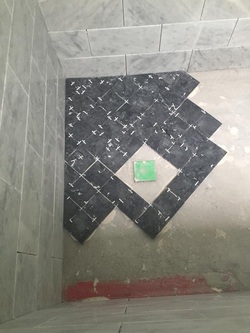


It’s been a few weeks since our last talk, but there’s good reason for it! My wife and I welcomed our first child into the world. We’re doing well, and a little sleepy, but it’s time to get back to talking about saving money on remodeling.
We’ve mentioned before that kitchen remodels offer a good return on investment.
A professional house flipper interviewed on Minneapolis television echoed this sentiment, saying replacing dated countertops, flooring, and cabinets are easy fixes to get your kitchen on point.
A real estate agent also interviewed for the story agreed, saying kitchens “sell houses all day long.”
Avoiding speed bumps in any kitchen remodel is the name of the game. An article on Time.com offers 10 great tips on avoiding catastrophe in the kitchen, but we wanted to highlight our favorites.
First up, consider the market and comparable homes in the neighborhood when it comes to setting up your budget. Keeping costs low also keeps the headaches and worry at bay.
Second, keep the plumbing and electrical systems where they are. Moving these are incredibly costly.
Also, avoid a patchwork look by not mismatching appliances. Appliance sets offer savings on costs and are better looking.
Whether you choose to go big or modest on your kitchen remodel, heed the words of Shreveport Times remodeling columnist Jeb Breithaupt and don’t get greedy! Looking for shortcuts is not the way to go.
“When you cut corners to save a few bucks, you’ll pay double in lost time, accident-related insurance premium increases and having to hire a second contractor to do the job over right,” he says. “Hiring someone without a state contractor’s license and insurance for the job you need done puts you, your property and the contractor himself at risk if he’s stepping out of his area of expertise because you’re waving dollar bills in his face. Greed works both ways.”
Have a good week!

For some homeowners, having a small bathroom isn’t a point a pride, and remodeling it has probably topped the wish list for years.
If you are ready to take the plunge and make the most out of your smaller bathroom, look no further than these tips and tricks on how to do so.
First, pay close attention to what kind of vanity you want. A pedestal sink will add some space and pop to your bathroom, but will sacrifice storage space. If storage is important and you are looking to update your sink-cabinet look, opt for one that has short legs like a dresser.
Second, look to build storage into the walls. Even if you don’t go with a pedestal sink, building a medicine cabinet by the sink or a storage pocket nearby or inside your shower can take your space to the next level.
Third, rethink the existing layout and get rid of any wasted space. If your bathroom has a bathtub in addition to a shower, ditching the tub can free up space to make a more luxurious shower. If you are gutting the area, go over the layout with your contractor. Converting any wasted space into a shower bench or extra shelving can really have an impact.
Fourth, take another look at lighting. Adding overhead lighting to a shower gives off the impression of a larger space. It can also be used to bring out any unique tile patterns.
Have a good week!

At MK Remodeling & Design we understand that customers enjoy saving money. That’s why we are thorough in the planning process, take the time to answer your questions, and work to deliver the best experience possible, so that your project is handled efficiently and on schedule.
In the pursuit of saving money, some customers have taken it upon themselves to purchase their own building supplies. More money in their pockets, right? Not exactly.
The risk associated with customers getting their own supplies is a topic on MarkupAndProfit.com.
In theory, it’s supposed to work out. The customer provides supplies, the contractor uses supplies, the job is finished, everyone wins.
In practice, however, it doesn’t work like that.
First, customers don’t always know how much of a supply to get. Let’s use tile as an example. A customer orders tile as part of a new flooring project. They come up short. Now the job comes to a screeching halt while more tile is ordered. Or worse, that tile is discontinued. Now the customer must choose between having mismatched tile in his or her house, or tearing up the existing tile and starting from scratch. Expensive problems all around. And if the customer orders too much? Well, the market for second-hand tile is non-existent.
Second, most customers don’t have the experience to recognize a good supply from a bad one. All supplies look great on your computer screen. But an experienced contractor has made enough orders to know what brands will deliver the highest-quality materials. Additionally, some contractors have built a good ordering rapport over time, leading to savings a normal customer would miss out on.
Third, customers do not realize they are assuming all the risk by ordering their own materials. A good contractor will use the customer’s input to make a decision with both parties’ goals in mind. Taking a contractor’s expertise out of the equation is tempting folly. If a customer supplies parts, they are agreeing to supply the materials on time. Failure to do so means compensating the contractor for their time to get the parts delivered. A customer supplying parts also means they are assuming the costs if something should be wrong or missing with the parts.
That’s only a few of the potential pitfalls that come into play when customers order their own materials. It boils down to this: If you want someone to make you a great dinner, you should let them do the grocery shopping. Put MK Remodeling & Design’s experience to work!
